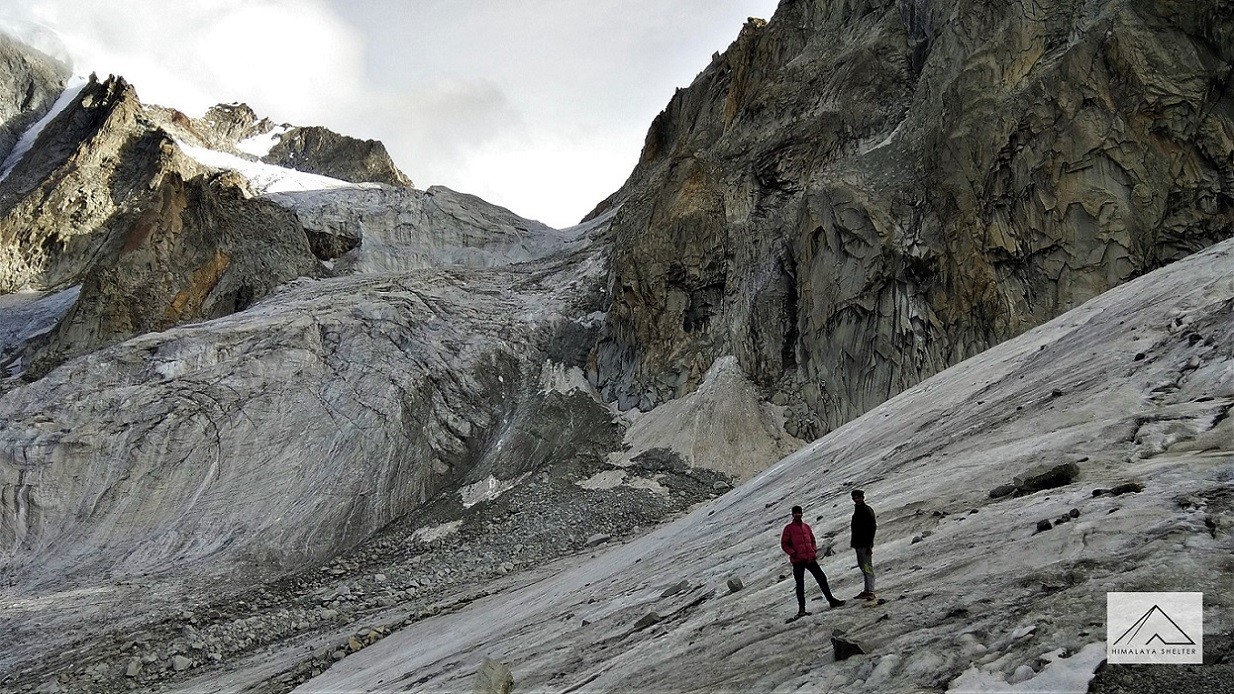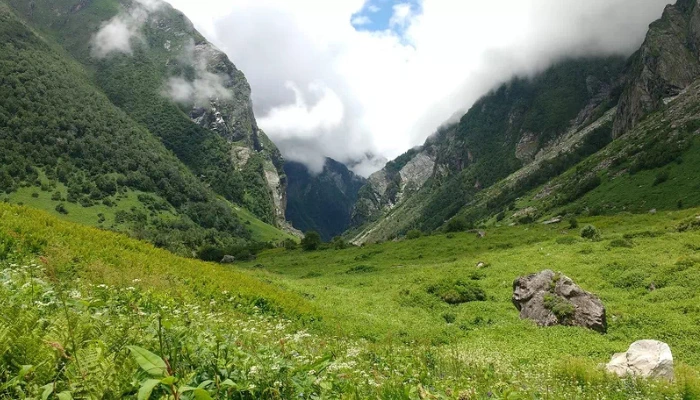
Binsar Trek
TREK DIFFICULTY
Easy
TREK DURATION
4 Days
HIGHEST ALTITUDE
8100 Feet
GROUP SIZE
12
TREK DISTANCE
22 Km
BASECAMP
Uttarakhand
BEST TIME
All Year
PICKUP POINT
Dehradun (Prince Chowk)
Binsar Trek
A walk through the woods is every trekker’s dream and Binsar Trek offers exactly that. Binsar offers a perfect Wildlife adventure trek and a true “Jungle “experience for the brave-hearted. Situated in the Kumaon region in the Himalayas, Binsar Sanctuary is located on the Jhandi Dhar hills at an altitude of approximately 2500 Mts.
The trek is rather easy as it passes through some lush green forests flanked with Ruby red rhodendrons that are in full blossom in the months of March and April. Oak-covered thick dense forest at Binsar is also home to over 200 species of Himalayan birds and mammals including leopard, Himalayan goral, chital, and musk deer amongst many others. The walk through the dense greenery, twittering birds, singing rivulets, and trees dancing to the tune of the Himalayan breeze is indeed a sight to behold.
The total trekking distance is about 22 km beginning at the Binsar Sanctuary and ending at Jageshwar Temple. At Dhaulchina camping site can also enjoy the Majestic Himalayan snowclad Peaks of Nanda Ghunti, Trisul, Nandadevi, Nandadevi East, Chhanguch, Nandakut, and Dangthal. Mrigathuni, Maiktoli. Our trek proceeds towards Jageshwar Temple as the adventure through Deodar forest continues and the trail leads us to the main temple. The Temple belongs to the 9 – 3rd Century era and is a small Jewel among many other Heritage temples in Northern India juxtaposed around the Himalayas.

History of Binsar Trek
Binsar trek is known for its rich spiritual and ecological significance. The name Binsar is derived from Bineshwar Mahadev who is believed to be an incarnation of Lord Shiva. Locals believe that Lord Shiva in the form of Bineshwar meditated here in the dense forests of Binsar.
During medieval times (7th to 18th century CE), Binsar used to be the summer capital of the Chand Dynasty who ruled Kumaon region. They built a temple named after Bineshwar Mahadev to offer their tribute to Lord Shiva.
Since the Binsar region had a great strategic and ecological importance, the British also kept surveillance and documented the region. They reestablished Binsar as a summer retreat. Many colonial bungalows and rest houses were built here for them.
Around 1988, the government identified Binsar as a biodiversity rich region and designated it as a protected wildlife sanctuary. Binsar Wildlife Sanctuary includes rich flora like broadleaf oak and deodar forests and diverse Himalayan fauna.
Jageshwar Temple: Binsar trek usually ends at Jageshwar Temple. Some believe that Jageshwar is one of the 12 sacred Jyotirlingas. It was also considered the first place where Lord Shiva was worshipped as a lingam. Locals associate it with the concept of Sapt Rishis (7 sages) who were believed to perform yagnas here.
Presently, Jageshwar is considered a major Shaivite pilgrimage centre as many pilgrims visit it across Himalayan belt. It is also a part of 'Manaskhand Mandir Mala' project promoting spiritual tourism in Uttarakhand.
Highlights of Binsar Trek
- Sunrise from Zero Point View:
In Binsar Wildlife Sanctuary, you can spot an amazing 360-degree view of snow-clad Himalayas from Zero Point. During the sunrise, Himalayan peaks like Nanda Devi and Trishul glow with golden sunshine and create a dreamy scenery. Many nature lovers reach early to witness this surreal moment of light and joy.
- The Whispering Forests:
Binsar is known for its rich flora including deodar, oak and rhododendron trees. Locals call them 'whispering deodars' as the wind through their dense canopy creates a musical rustle. These trees have a great economical and medicinal value and they are protected under Binsar Wildlife Sanctuary.
- Rare Sightings of Elusive Himalayan Serow:
Binsar Wildlife Sanctuary is home to a rich fauna. Few know that it's a protected home for the elusive Himalayan Serow. Serow is a goat-antelope with curved horns and thick fur. This solitary creature is shy and often spotted only at dawn or dusk. Spotting Himalayan Serow is considered lucky and a sacred encounter.
- Legacy of Colonial Dak Bungalow:
The forest rest house in Binsar once used to be a colonial dak bungalow where British officers documented Kumaon's biodiversity. Today, it's worth visiting for its wooden interiors and panoramic balconies and offers a rustic charm and glimpses into colonial history.
- Stone Carvings at Jageshwar:
Binsar trek ends at Jageshwar Temple. Many temples at Jageshwar are the hidden gems of ancient stone sculptures and Sanskrit texts. These stone carvings tell the stories of Shaivism, tantric rituals and regional folklore. Some of them are still undeciphered and create curiosity for history lovers and spiritual seekers.
Difficulty Level of Binsar Trek
Binsar trek is considered an easy to moderate trek which is suitable for beginners, families and kids over 8 years. It is located near Almora in Kumaon region at an elevation of approx 2,420 m, (Zero Point at 2,420 m).
The trail takes through the Binsar Wildlife Sanctuary and British era rest houses. Binsar Wildlife Sanctuary is known for its rich biodiversity and you get to see a variety of flora and fauna here. The trail is about 22 km long and takes 1 to 3 days to complete, depending on your chosen itinerary. You need to walk 4-6 hrs per day which covers around 10 km.
The trail is well-marked and involves mud paths, forest trails and normal uphill sections. You can encounter a few steep patches and rocky sections but they are not technically challenging. You can hire a guide but not mandatory – trails are well-marked and beginner-friendly.
Binsar trek is an all-season trek and weather is mostly pleasant year-round but still avoid monsoon and peak winter. Mornings and evenings are generally cooler, especially in winter. Summer is ideal for clear views and comfortable hiking.
Wear comfortable clothes (trekking pants) and good quality trekking shoes. Carry water and light snacks. The network is hampered in some areas so inform someone before you go. If you're a solo trekker and unfamiliar to routes, hiring a guide is recommended.
Best Time to Visit the Binsar Trek
For the best and comfortable trekking experience, plan your Binsar trek from March to June and September to November. These months offer pleasant weather, scenic trails, clear sky and good visibility of Himalayan peaks like Nanda Devi and Trishul.
- March to June (Spring to Summer):
During these months, forests are lush green and vibrant. You will see blooming rhododendrons everywhere which make the journey pleasant and enjoyable. Trails remain mostly dry and safe. Sometimes there can be occasional rain but otherwise, weather remains clear. Daytime temperatures range between 15°C to 25°C. Nights can be chilly around 8°C to 12°C temperatures. Keep a light jacket and raincoat to avoid unpredictable weather conditions.
- September to November (Autumn):
After monsoon, air becomes crisp and sky turns clearer. Landscapes are even fresher after rain but by late October they turn golden due to autumn. Sunlight feels cozy and visibility to view Himalayan peaks are very high. This is a good time for birdwatchers and nature lovers in Binsar Wildlife Sanctuary. Daytime temperature remains around 18°C to 25°C while at night time it dips to 10°C to 15°C. Winter clothes are must for this season.
- Avoid Monsoon and Harsh Winters:
July-August (monsoon) should be avoided. Due to heavy rainfall, trails become slippery and leech-infested. The risk of landslides is also high. Similarly, avoid December-February for harsh winters. The temperature is very cold this time and visibility is very poor.
How to Reach the Binsar Trek
Binsar is located in the Almora district of Uttarakhand. Almora is well connected by road from almost all parts of North India. From Delhi, the journey begins with a train or bus to Kathgodam, the nearest railway station, about 120 km from Binsar.
From Kathgodam, you can take a taxi or private cab to reach Almora or directly to Binsar. The drive from Kathgodam to Binsar takes about 4 to 5 hrs and passes through scenic hills, pine forests and small villages.
The final journey towards the Binsar Wildlife Sanctuary may need special permission at the entry gate, especially if you're staying inside the forest area. Private vehicles are allowed and forest guest houses provide accommodation options.
The trek to Binsar begins near the sanctuary or from nearby villages like Dhaulchhina, depending on your route. It's advisable to take a local guide if you plan to explore deeper trails.
Things to Carry in the Binsar Trek
Clothing
- 3 quick-dry T-shirts (full sleeves preferred)
- 2 trek pants (water-resistant if possible)
- 1 fleece jacket or woollen sweater
- 1 down jacket or heavy padded jacket
- 1 thermal inner set (top + bottom)
- Waterproof & windproof jacket
- Poncho or raincoat
- Woolen cap + Sun cap
- Neck gaiter or scarf
- 2–3 pairs of synthetic/woolen socks + 1 pair of woolen gloves
- Innerwear (quick-dry), towel
Footwear
- Trekking shoes (ankle-high, good grip)
- Floaters/sandals (for campsites)
- Gaiters (recommended due to snow/rock)
Bags
- 50–60 litre backpack (with rain cover)
- Daypack (10–20 litre) for summit day or acclimatization walks
- Dry bags or ziplocks (to keep items dry)
Personal Gear
- Trekking pole(s)
- Sleeping bag liner (optional)
- Headlamp with extra batteries
- Water bottles (2L total capacity) or hydration pack
- UV-protection sunglasses
- Sunscreen (SPF 50+), lip balm (SPF)
Toiletries & Hygiene
- Toothbrush, toothpaste, biodegradable soap
- Wet wipes, hand sanitizer
- Toilet paper, sanitary pads/tampons (carry back used items)
- Small quick-dry towel
Personal Medical Kit
- Diamox (for altitude)
- Crocin/Dolo, Combiflam, Digene
- ORS sachets, antiseptic cream
- Band-aids, gauze, crepe bandage
- Personal meds (if any)
- Betadine/Savlon
Documents
- Valid ID proof (Aadhaar, Voter ID, etc.)
- Medical certificate (fitness)
- Disclaimer form (from your trek operator)
Others
- Power bank
- Extra camera batteries (cold drains battery fast)
- Energy bars, dry fruits, glucose
- Notebook + pen (optional for journaling)
Treks in Uttarakhand | Trekking companies in Dehradun | Har Ki Dun trek | Bali Pass trek | Phulara Ridge Trek | Kedarkantha Trek | Dayara Bugyal trek | Gaumukh Tapovan trek | Kashmir Great Lakes trek | Valley of Flowers trek | Nag Tibba Trek | Kuari Pass trek | Chopta chandrashila trek
Binsar Trek Short Route (2 Days / 22 km)
Day 1: Binsar Wildlife Sanctuary to Dhaulchina
Start Point: Binsar Wildlife Sanctuary Gate (2400 m)
Trek Distance: 3 km
Trail: Through dense oak, rhododendron and deodar forests
Campsite: Dhaulchina (2250 m)
Views: Panoramic views of Nanda Devi, Trisul, Panchachuli
Day 2: Dhaulchina to Jageshwar Temple
Start from Dhaulchina after breakfast
Ascend to: Vriddha Jageshwar Temple (2250 m)
Descend to: Jageshwar Temple complex (1830 m)
Trek Distance: 8–9 km
Terrain: Gradual forest descent with occasional clearings
Post-Trek Travel
End Point: Jageshwar
Drive options: To Almora or Kathgodam by road
In Himalaya Shelter, we provide you with the option to customize your Binsar trekking experience. Whether you're a beginner, solo traveller or a group of friends, you can opt for our personalized tailor-made trekking program.
This customized trek will be exclusively designed for you, taking into account your specific requirements for transportation, accommodation, meals and any other premium facilities you may need during the trek.
Binsar trek's trail passes through oak, pine, rhododendron forests and Binsar Wildlife Sanctuary. It ends near Jageshwar Temple. Himalaya Shelter ensures your journey is safe and memorable with experienced local guides and all necessary permits. You can even request offbeat routes or sunrise hikes for a more immersive Himalayan experience.
Moreover, no other participants will be added to your group. Choosing a customized trek will enable you to fully enjoy the trek with your loved ones.
Day 1: Dehradun – Kathgodam (277 kms ) 8 - 9 hours drive
We start early morning from Dehradun via road towards Kathgodam. After a long drive through pristine and raw nature, we enjoy sumptuous dinner and stay at this location overnight in a guest house.
Day 2: Kathgodam - Binsar Wildlife Sanctuary (110 kms) 4 hours - Dhaulchina (7kms) 3-4 hours trek
We start early morning from Kathgodam towards Binsar Sanctuary which is our starting point for this trek. The trekking distance is about 7 kms which can be covered in 3 to 4 hours. The trail is easy for first time trekkers. We reach Dhaulchina and camp here overnight. Enjoy the view of surrounding Himalayan peaks from this point as you camp here under the moonlit starry skies.
Day 3: Dhaulchina – Jageshwar Temple (8kms) 4-5 hours trek
After delicious breakfast we head towards Jageshwar Temple. This trekking distance is about 8 kms that can be covered in about 4 -5 hours. This path crosses through Deodhars, Oaks and Rhodendrons and leads to the Jageshwar temple that dates back to 9-13th Century. We offer our prayers to the deity and head back by road to Kathgodam.
Day 4: Kathgodam - Dehradun (277 kms ) 8 - 9 hours drive
After early breakfast we head back by road towards Dehradun to conclude our adventure.
Inclusions
Our treks are specially designed by the experienced team at Himalaya Shelter, taking you on an adventure of a lifetime all while making you connect not only with the bountiful nature but also with yourself and with others on the trek with you creating wonderful memories which will last you a lifetime. All Himalaya Shelter treks are guided by experienced Trekkers having vast knowledge and experience of the region, providing with insightful information and stories pertaining to the region’s flora and fauna and the history of the region whilst the trek. It is safe to say that on successfully completing the trek, one will gain tremendous insight and experience along with lifetime memories.
- Transport support from Kathgodam to Kathgodam
- Accommodation – At Base Camp, stay at a local homestay or guest house for one night each, which will give you an insight into the authentic lifestyle of the locals.( INR 5000 per person extra for single sharing throughout the trek )
- On Trek stay in a 2-person Vango Halo Pro/A-Shape tent, which is to be shared by two trekkers, built to withstand extreme weather conditions and at the same time making you comfortable after a hard day’s trek.
- Camping Equipment – specially designed sleeping bags that can withstand harsh weather conditions, foam mattresses. Other safety gear like microspikes, gaiters, an ice axe, and helmets will be provided.
- Medical Kit – our team will be equipped with an extensive medical kit, which our team is trained and experienced to use. Oxygen cylinders are used after they are thoroughly inspected throughout the Trek. Even campsites have large oxygen cylinders as backups.
- Permission - Forest entry charges for Indian nationals (Additional charges will be applicable for international tourists)
- Meals – Breakfast, packed lunch (on trek days), evening snacks, and dinner will be served. A hearty, delicious, and nutrition-filled Veg meals with egg preparation will be provided throughout the trek. (Jain and Vegan Food can also be arranged on prior notification.)There will be a dedicated Kitchen Tent along with a dining tent, which will have a dining table too.
- Our Team – A highly experienced and AMC-certified Trek Leader who will help ensure that the entire trek goes smoothly and safely while navigating the challenging conditions during the trek, and is skilled enough to navigate any medical emergency that can arise during the trek. Local and route Guides who are well-versed with the region and provide an in-depth insight into the local customs and knowledge of the flora and fauna endemic to the region. A dedicated Kitchen staff, which includes a Cook, a helper, and other support staff.
- There will also be porters and mules to carry common equipment.
- Cloakroom - We have a cloakroom facility available for extra luggage. Every trekker is permitted to leave their luggage behind at no charge.
Exclusions
- Personal expenses like tips, personal medicines, phone calls etc.
- Travel Expenses - Travel expenses from your hometown to the mentioned Pick-Up Point are not included in the trek fee.
- From the scheduled pick-up spot to the base camp, we have our own fleet of vehicles like Bolero, Innova, Dezire, or Tempo Traveler (12-seater). This is be shared by trekkers for a pre-decided amount. All vehicles are non-AC.
- Personal Equipment - Any personal gear like jackets, shoes, cutlery, or backpacks are not included in the trek fee. We recommend renting them from our Rental Store for an affordable fee. This can be pre-arranged to avoid last-minute hang-ups.
- Offloading - We encourage carrying your backpack to get into the true spirit of trekking. However, if needed, you can opt to offload your personal luggage of up to 12 kgs for an additional cost of INR 500 per bag per day.
- Trek Insurance - A mandatory trek insurance fee is charged in addition to your trek fee. Since most medical insurance doesn’t cover adventure activities, trek insurance offers essential coverage, enhancing your safety without a significant financial burden.
- Buffer day on the trek - We have kept a buffer day on the trek to account for any weather-related delay. If this is utilized, you will need to pay an extra amount to your trek leader.
- Anything apart from inclusions
- Please carry a lunch box for a packed lunch/breakfast to avoid using polythene and Aluminium foil.
- Keeping the Himalayas clean is our own responsibility. Reduce the use of Plastic when you are in the abode of the Sacred Himalaya. 🌱
The Chand Dynasty which ruled Kumaon from the seventh to the eighteenth century AD had Binsar as their former summer capital. The quiet charming hamlet is one of the most picturesque spots in the Kumaon hills rising 2420 meters above sea level.
This small village nestled in the Kumaon Jhandi hills is roughly 385 kilometers from Delhi and 24 kilometers from Almora. Zero Point is 2 km away on foot from KMVN Tourist Rest House and can be reached by taxi to Binsar Wildlife Sanctuary.
The Binsar sanctuary Almora town Kasar Devi and Bageshwar Dham are all within striking distance promising an eventful 3-4 days.
Binsars local cuisine is a must-try before you depart. Among the well-liked dishes are Kumaoni raita Palak ka kapa Kaudh ke daal Bhatt ki daal Bhaang ki khatai Madve ki roti (ragi roti) and Aloo ke gutke. These meals are typically made with a variety of regional ingredients including pulses herbs and spices.
In all 604 vascular plants from 103 families and 421 genera were identified. The dominant genera were Crotalaria Eragrostis and Euphorbia while the dominant family was Poaceae which was followed by Asteraceae Fabaceae Lamiaceae and Rosaceae.
For a one-way trip, the Kathgodam to Binsar taxi fare starts from INR 2486. The charges to book outstation cab may differ depending on the date and time of your journey and the type of car you are choosing to travel from Kathgodam to Binsar. You can also book a Binsar to Kathgodam cab on MakeMyTrip.
It provides breathtaking views of the magnificent Himalayan peaks including Chaukhamba Trishul Nanda Devi Shivling and Panchachuli because of its location. Locals claim that the 16th-century Bineshwar Mahadev temple which is devoted to Lord Shiva is the source of Binsars name.
Read More on Binsar Trek
Treks by Categories
Treks By Month

Treks By Experience



























